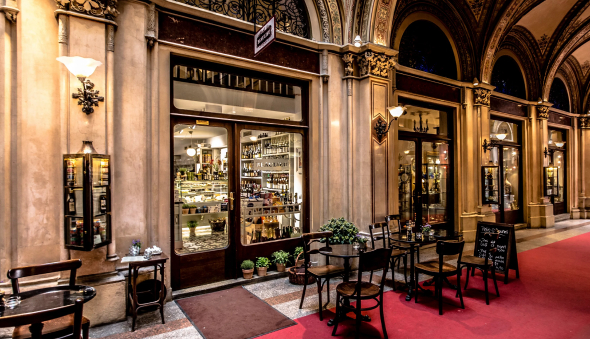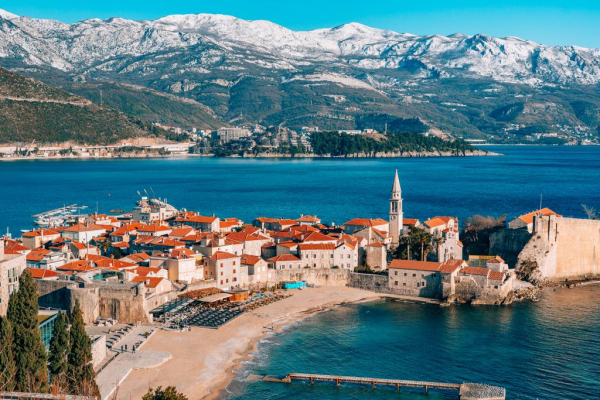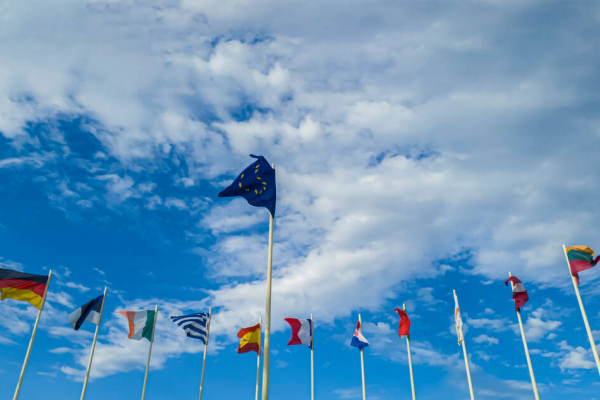Montenegro
genERAL INFORMATION

Geography and climate
Montenegro is located on the Adriatic coast of the Balkan Peninsula and borders Croatia, Bosnia and Herzegovina, Serbia, Albania and the partially recognized Republic of Kosovo. The Adriatic Sea washes Montenegro from the southwest.
Montenegro is famous for its landscapes. Not only the warm sea with cozy beaches, but also mountains, canyons, forests, picturesque reserves, as well as numerous rivers and lakes, glacial caves, waterfalls - all this is in Montenegro. The Adriatic coast in Montenegro is the most environmentally friendly in the entire Mediterranean.
In the north of the country the climate is temperate continental, and on the Adriatic coast - Mediterranean.
In the mountainous regions of the country, summers are moderately warm, with an average temperature of +19 to +25 °C. The temperature in winter is from +5°C to -10°C.
In the coastal region, summers are usually dry, hot and long, with an average temperature of +23 to +25°C. Winter is relatively short and not cold. The temperature in winter is from +3 to +7 °C.
The number of sunny days in Montenegro is 225.
The beach season in the resorts of Montenegro lasts from mid-May to the end of October. The water temperature in summer is 18-24 degrees. August is the sunniest and hottest month.
Benefits of living in Montenegro
Convenient country location for traveling around Europe. There is a ferry from Bar to Italy. Low-cost airlines (low-cost airlines) fly from the capital, so you can fly to European countries for ridiculous money.
The Montenegrin language is easy to learn and easy to get used to. Montenegrins are also Orthodox, so their mentality is easier to understand, there is a certain closeness of cultures.
Incredibly beautiful nature, warm sea, forests and mountains - all these trump cards of Montenegro attract tourists and expats.
Montenegro has a high life expectancy. In 2020, the life expectancy of the average citizen is 75.7 years.
It's calm and safe here. There is a large Russian-speaking diaspora. Low prices for rental property and accommodation, especially compared to European countries.
Measured lifestyle. Montenegro is a small country, and here no one is in a hurry to go anywhere. The locals even have a special word - "polako", which means "quietly, calmly, slowly." So, if you are tired of the frantic pace of life and are looking for a quiet cozy haven, Montenegro is definitely for you.
Economy and infrastructure
Since 2010 Montenegro has been an official candidate for EU member states. Montenegro has been a member of NATO since 2017. It uses the euro, but is not part of the Eurozone.
Montenegro has a transitional economy. In recent decades, tourism has become a key sector of the Montenegrin economy. Also, the basis of the country's economy is mining, shipbuilding, salt mining, electrical, chemical, textile industries. The climate of Montenegro contributes to the development of agriculture. Tobacco, cereals, a variety of vegetables and fruits are grown. In ecologically favorable conditions, natural products of high quality grow.
Montenegro annually increases the tourist flow. Tourists are attracted by a high level of ecology, good service and fairly low prices. The country is actively developing infrastructure, including tourism.
The road network in Montenegro is 7,762 kilometers. The length of the railway is 250 km.
An important role is played by the large seaport in Bar. Also in Montenegro there are 4 domestic and 2 international airports (located in Podgorica and Tivat).
It should be noted that the European Union actively supports the country's economy. Thus, over the past 25 years, more than 73 million euros have been invested in the development of Montenegro.
The Government of Montenegro also guarantees the protection of foreign investment. All this makes investing in Montenegro safe and attractive.
Cultural heritage
The capital of Montenegro is Podgorica. The historical and cultural capital is the city of Cetinje.
The architecture of Montenegro has been influenced by different cultures - Byzantine, Latin, Venetian and Ottoman. The ancient city of Kotor is under the protection of UNESCO. The architecture of the old town of Kotor is dominated by the influence of the Venetian style. The main attraction of the city is the Cathedral of St. Trypun (XII century).
In Cetinje, the ancient capital of Montenegro, there is the Cetinje Monastery - the main attraction of all of Montenegro, as well as the Vlaška Church (the first walls were built back in the 14th century) and the Church of the Nativity of the Virgin.
The rich heritage of the Middle Ages is amazingly combined with the natural landscapes of Montenegro. Narrow streets, ancient churches and turrets - all this is desirable to consider and study.
Education
According to local laws, secondary education in Montenegro is free for everyone, including foreigners. You have to pay for higher education. A year of study on a bachelor's program costs from 500 to 1500 euros, on a master's program - from 1500 to 2500 euros. Doctoral studies are 3,000 euros per year.
Education in Montenegro is much cheaper than in the States or Europe. At the same time, graduates study according to the Bologna system and receive European diplomas.
Accommodation and meals in Montenegro are also much cheaper for students than in neighboring Europe, and official part-time work is also allowed while studying.
It is not difficult to enter local universities, since the competition here is small. Three key universities in Montenegro are located in the capital, but there are branches in other cities of the country. The most famous and the only public university in the country is the University of Montenegro (Univerzitet Crne Gore).
.
Best real estate deals in Montenegro
By sending a message, you thereby accept the user agreement and confirm that you have read and agree to the privacy policy of this website.













